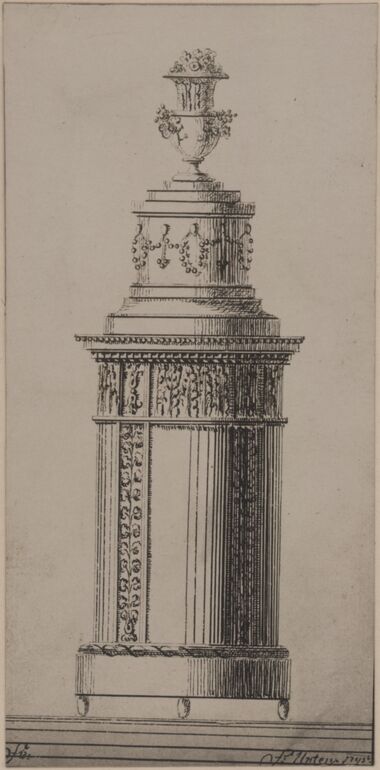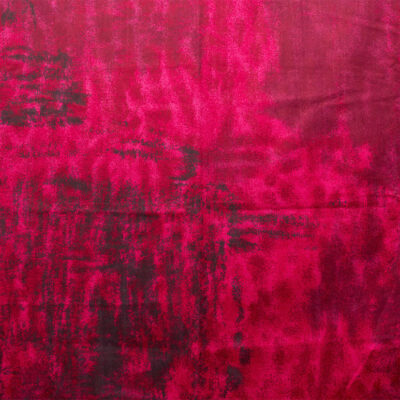1/4
題名
- Hunting carpet (descriptive title)
Collection
時代 | 王朝 | 様式
主題
材料 | 手法
-
Flor, Kette, Schuss: silk,
-
brocading weft: metal thread,
Measurements
- 縦幅: 687 センチ
- 横幅: 331 センチ
作品番号
- T 8336
Acquisition
- 引継 , 1922
Department
- Textiles and Carpets Collection
Associated Objects
- photograph, Fotografie eines Details des "Jagdteppichs" aus dem MAK – Österreichisches Museum für angewandte Kunst / Gegenwartskunst
- photograph, Fotografie einer farbigen Kopie des "Jagdteppichs" von Ferdinand Sodoma
- postage stamp, Kuvert zum 5. Internationalen Kongress für Orientteppiche Wien-Budapest 1986 inklusive einer aufgeklebten Sammelmarke mit der Abbildung einer Nachzeichnung des Jagdteppichs aus der Sammlung des MAK
- artwork copy, Kopie eines orientalischen Teppichmusters mit geflügeltem Wesen sowie Blumen- und Tiermotiven
Description
-
Due to its fineness, motifs, and size, the famous silk Vienna Hunting Carpet ranks among the world’s most exceptional carpets and was repeatedly publicized as early as the 19th century. Originating from the court of Shah Tahmasp I (r. 1524–1576), the carpet’s design presumably lay in the hands
of the court painters working for the art-minded ruler. Comparable hunting scenes are found in miniature painting, as well as on fabrics of Safavid production. The middle of the balanced pattern forms a medallion with dragons and
phoenixes—symbols of power borrowed from China found in the Persian formal repertoire since the Ilkhanid period. The corners are marked by quarters of the main medallion. Safavid horsemen and prey in the surrounding fields form one of
the famous imperial hunts. Peris (angel-like beings) are depicted in front of dainty tendrils in the surrounding borders.
See More:
- Video auf Vimeo (MAK Vimeo)
- 3D-Modell (MAK Sketchfab)
- Artikel von Ignaz Schlosser zur Restaurierung der Jagdteppiches (MAK Hauspublikation)
- Abb. im Global Lab Kat. (MAK Hauspublikation)
- MAK Führer 1993, Abb. S.124 (MAK Hauspublikation)
- Ausstellung orientalischer Teppiche aus ehemals kaiserlichem Besitz, 1920, Abb. Kat. Nr. 1 (MAK Hauspublikation)
- Altorientalische Teppiche, Wien 1951, Abb. Tafel 7, 8, 9 u.10 (MAK Hauspublikation)
- Tradition und Experiment, 1988, Abb. 47 (MAK Hauspublikation)
- Führer durch das ÖMKI, 1929, Abb. 53 u. 54 (MAK Hauspublikation)
- Führer durch das ÖMKI, 1929, S. 112, Nr. 49 (MAK Hauspublikation)
- Kunstschätze aus Iran, 1963, Abb. S. 80 (MAK Hauspublikation)
- Bustan: Heinz, D.: „Die Slg. orient. Teppiche im ÖMAK. 1962, Abb. 12 (MAK Hauspublikation)
- Bustan: Heinz, D.: „Die Slg. orient. Teppiche im ÖMAK. 1962, Abb. 13 (MAK Hauspublikation)
Last update
- 17.10.2025





















